| Return to main page |
The historian then led the party on a tour of the historic centre. They called
first at the recently established Ukrainian school, where they were given a
traditional welcome and offered bread and salt. Ania, who up to that point had
been very doubtful about the long-term survival prospects of this minority group,
began to have second thoughts as she saw the commitment of these teachers. 'Why
did the Polish side agree to a separate school for the minority?' she asked.
'It doesn't seem to fit with the nationalist policies that we've been told about.'
'That's right,' said the headmaster, 'and the local officials don't approve
of us at all. But our authorisation came from Warsaw, at a time when the authorities
there were anxious to show the world that they were taking positive steps to
promote the cultural and educational conditions of minorities. We were lucky
- under a different government it might never have been authorised.' Ania looked
carefully at some introductory history volumes. She could not understand much,
but it was clear that these texts were extremely Ukraino-centric.
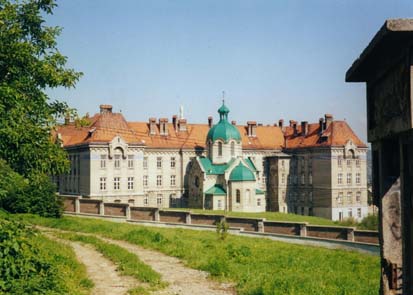
Figure 68: The former Greek Catholic seminary, with a long disused Jewish cemetery in the foreground
They continued past all the contentious churches and looked into
the former Greek Catholic seminary, one of the first buildings they were
able to regain in the early 1990s. It had taken them much longer to get
back the county museum, once the Greek Catholic bishop's palace, but recently
even this had been finally handed over. The students then passed through
the market and crossed the bridge which had once marked the border between
the troops of Hitler and Stalin. Tom photographed the recently rebuilt
monument to the schoolboy Polish heroes of 1919. 'This,' said Dr. Dylogowa,
'is a good example of how the past can be made to live in the present.'
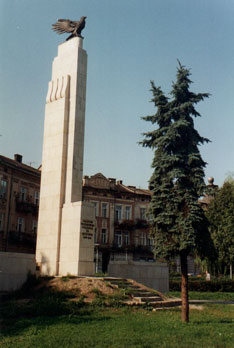
Figure 69: Monument to the martyrs of 1919
The Professor drew their attention to a distinctive building which, he said,
had served as the state archives in the communist period. It had now been handed
back to the Greek Catholics and, sparklingly restored, was being used once again
by the Basilian monastic order.
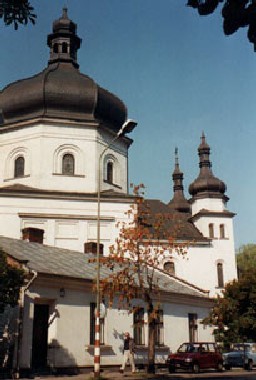 |
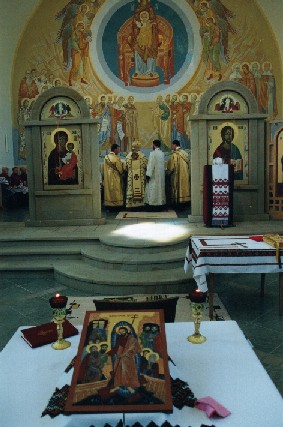 |
Figure 70: (i) The Basilian monastery (formerly the State Archives) (ii) The Interior after Renovation
At last, surrounded by drab high-rise housing, they reached the elegant new building which now housed the state archives. Dr. Dylagowa embraced the curator, who was an old friend from her undergraduate days. The students were given a quick tour of the exhibition room, which featured Greek Catholic bishops of the nineteenth century. 'Notice that in those days many of the bishops of this Church were ethnically Polish,' said the Professor. 'It was only later on that the Greek Catholics began to take the Ukrainian side in the inter-ethnic struggles, and even then not all of them.'
'Now,' said Dr. Dylagowa, 'we'd like to show you some of the parish registers stored here, to give you an idea of the sources that historical anthropologists use.' The curator produced a pile of dark bound volumes, pointing to curiosities as she flicked through the dusty pages. The Professor asked for volumes from the villages where they had been staying and showed the students how to set about constructing genealogies for their host at the Lemko wedding and for the friendly headman. Ania was beginning to feel very tired, but Tom followed the deft diagrams of the Professor with close attention. He asked for the books of X, a village not far away, where his great grandfather had been born in 1894. 'No problem,' said the curator. 'But I know that lots of families from X intermarried with people from Y, the other village in the valley. Would you like those books too? It could be quite interesting, because although X has always been Roman Catholic, nearly everyone in Y is Greek Catholic.' By the time the curator had located the volumes, Tom realised that everyone else in the party was ready to go. He asked if he might return the next morning. The curator said that, although it was a Saturday, she would be on duty anyway in the exhibition room, so he was welcome to show up at any time.
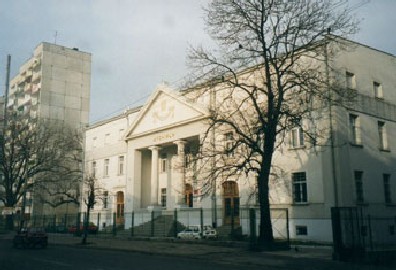
Figure 71: The new county archives
They spent the evening at the Ukrainian club. The highlight was a performance by a bandera group from the minority school. The bandera, the club leaders informed the party, was one of the distinctive national instruments of Ukraine. Ania asked if it had been played traditionally in the Przemysl region, and was told that, actually, it had not. But it was only natural that minority children here would now wish to adopt this symbol of Ukrainian culture, just as they were taught the gems of national Ukrainian literature and music, and to speak standard literary Ukrainian rather than dialects such as Lemko.
It was already quite late by the time Tom and Ania made their way up the
poorly lit hill, across the old Jewish burial ground, to old house where Maria's
parents and surviving grandmother lived. Tom had always felt comfortable here.
When they related how they had spent the day, the wrinkled grandmother smiled
and said: 'It won't be long before you know more about this city than I do!'
Maria asked if she could accompany Tom to the archives the following day.

Figure 72: The Town Hall and main market square
| Return to main page |